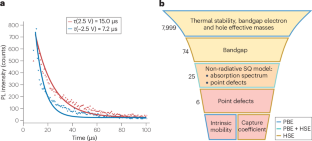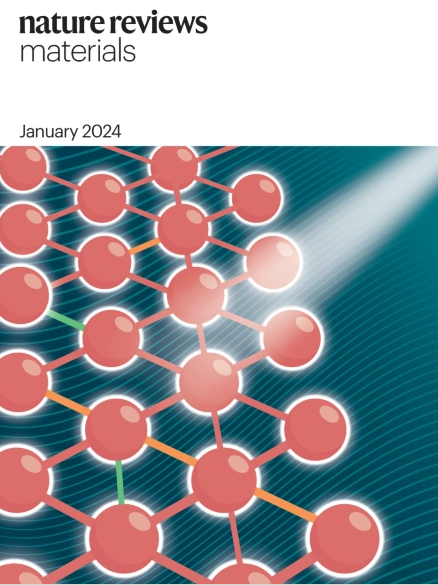Bridging theory and experiment in defect-tolerant semiconductors for photovoltaics
IF 86.2
1区 材料科学
Q1 MATERIALS SCIENCE, MULTIDISCIPLINARY
引用次数: 0
Abstract
Defect tolerance is a concept applied in photovoltaics to explain semiconductors such as lead-halide perovskites that excel without relying on single-crystalline growth. It differentiates from the mere absence of defects, emphasizing on minimizing the influence of defects on minority carrier lifetimes. Whether defect tolerance is the only reason for the superiority of lead-halide-perovskite-based solution-processed solar cells is still controversial. However, the defect tolerance of various semiconductor structures and materials has been experimentally suggested and, in some cases, proven. In this Perspective, we explore defect tolerance across material science, defect characterization and computational modelling. With a primary focus on electrically or optically active defects, we systematically compare computational and experimental results from the literature. We aim to address the complexity arising from diverse theoretical approaches that have yielded partially contradictory results. Additionally, experimental findings have been subject to varied interpretations, ranging from defect signals to ion migration. We endeavour to chart a course through this intricacy and seek to establish a rigorous framework for the identification and quantitative assessment of defect tolerance. Semiconductors that are insensitive to defects hold considerable promise for advancing photovoltaics. This Perspective highlights the importance of combining theoretical predictions with experimental validation to identify viable non-toxic, earth-abundant and cost-effective alternatives to existing materials.


光电容错半导体的桥接理论与实验
缺陷容忍度是一个应用于光伏发电的概念,用来解释卤化铅钙钛矿等半导体在不依赖单晶生长的情况下表现优异。它区别于仅仅没有缺陷,强调最小化缺陷对少数载流子寿命的影响。是否缺陷容忍度是卤化铅-钙钛矿基溶液处理太阳能电池优势的唯一原因仍然存在争议。然而,各种半导体结构和材料的缺陷容限已经被实验提出,并在某些情况下被证明。从这个角度来看,我们探索了材料科学、缺陷表征和计算模型的缺陷容忍度。主要关注电或光学活性缺陷,我们系统地比较了文献中的计算和实验结果。我们的目标是解决由不同的理论方法产生的复杂性,这些理论方法产生了部分矛盾的结果。此外,实验结果受到不同的解释,从缺陷信号到离子迁移。我们努力通过这一复杂的过程,并寻求为缺陷容忍度的识别和定量评估建立一个严格的框架。
本文章由计算机程序翻译,如有差异,请以英文原文为准。
求助全文
约1分钟内获得全文
求助全文
来源期刊

Nature Reviews Materials
Materials Science-Biomaterials
CiteScore
119.40
自引率
0.40%
发文量
107
期刊介绍:
Nature Reviews Materials is an online-only journal that is published weekly. It covers a wide range of scientific disciplines within materials science. The journal includes Reviews, Perspectives, and Comments.
Nature Reviews Materials focuses on various aspects of materials science, including the making, measuring, modelling, and manufacturing of materials. It examines the entire process of materials science, from laboratory discovery to the development of functional devices.
 求助内容:
求助内容: 应助结果提醒方式:
应助结果提醒方式:


